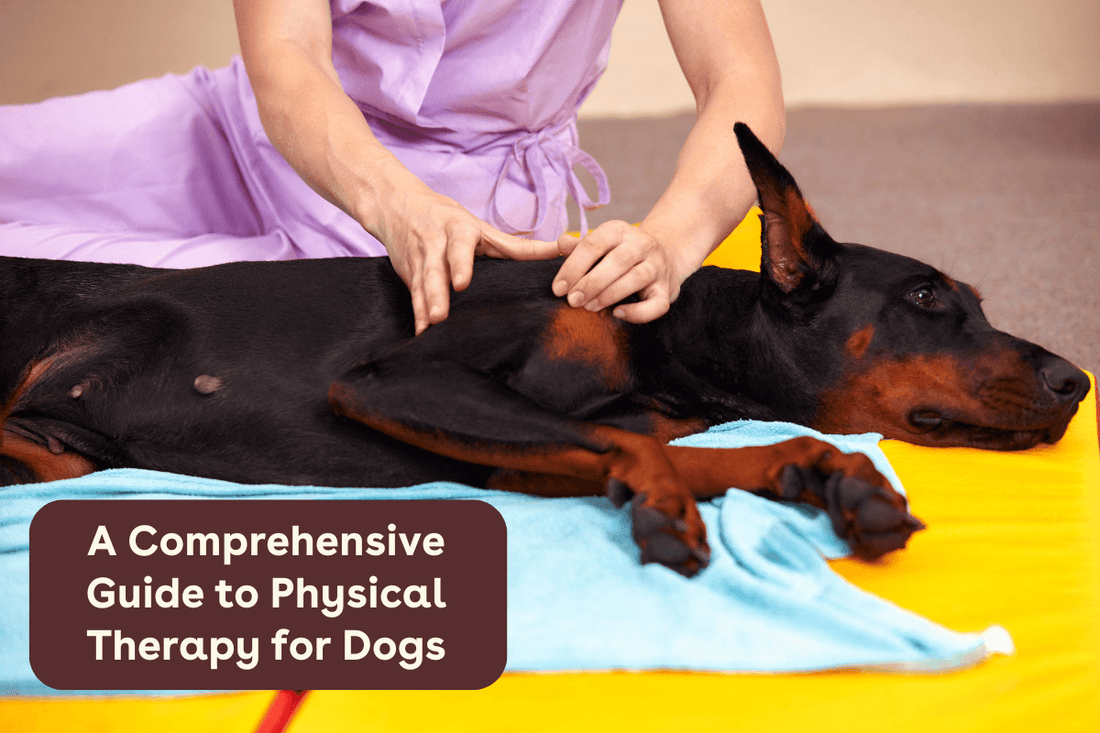As dog lovers, we cherish the boundless joy and companionship our furry friends bring into our lives. However, just like humans, dogs can also experience a myriad of health issues, ranging from orthopedic injuries to neurological disorders, which can significantly impact their quality of life.
Fortunately, advancements in veterinary medicine have paved the way for innovative treatments, including physical therapy, to help our canine companions live healthier and happier lives.
In this comprehensive guide, we will explore the benefits, techniques, and importance of physical therapy for dogs.
Table of Contents:
- Understanding Canine Physical Therapy
- Benefits of Physical Therapy for Dogs
- Techniques Used in Canine Physical Therapy
- Importance of Professional Guidance
Understanding Canine Physical Therapy

Physical therapy for dogs, also known as canine rehabilitation, is a specialized branch of veterinary medicine focused on restoring mobility, alleviating pain, and improving overall function in dogs suffering from various musculoskeletal and neurological conditions.
Just like human physical therapy, canine rehabilitation employs a holistic approach that integrates therapeutic exercises, manual techniques, hydrotherapy, and other modalities to address a wide range of issues.
Benefits of Physical Therapy for Dogs

Pain Management
Dogs suffering from conditions such as arthritis, hip dysplasia, or spinal injuries often experience chronic pain. Physical therapy techniques such as massage, joint mobilization, and therapeutic exercises can help alleviate pain, improving the dog's comfort and quality of life.
Enhanced Mobility
Mobility issues can significantly impact a dog's ability to perform daily activities and enjoy life to the fullest. Through targeted exercises and rehabilitation techniques, physical therapy aims to improve muscle strength, joint flexibility, and overall mobility, enabling dogs to move more comfortably and independently.
Faster Recovery from Surgery or Injury
After undergoing orthopedic surgery or sustaining an injury, dogs require careful rehabilitation to regain strength, flexibility, and function. Physical therapy plays a crucial role in the recovery process by promoting tissue healing, preventing muscle atrophy, and facilitating a faster return to normal activities.
Management of Neurological Conditions
Dogs affected by neurological disorders such as intervertebral disc disease (IVDD) or degenerative myelopathy can benefit from specialized rehabilitation techniques aimed at improving balance, coordination, and proprioception. Through targeted exercises and therapeutic interventions, physical therapy can help dogs maintain function and mobility despite neurological challenges.
Weight Management
Obesity is a common issue among dogs and can exacerbate musculoskeletal problems, leading to reduced mobility and increased pain. Physical therapy programs often include exercise regimens tailored to help dogs achieve and maintain a healthy weight, promoting overall wellness and reducing the risk of associated health problems.
Canine obesity is on the rise, learn about hidden calories in your dog’s treats.
Techniques Used in Canine Physical Therapy

Therapeutic Exercises
Canine physical therapists utilize a variety of exercises to target specific muscle groups, improve range of motion, and enhance overall function. These exercises may include walking on balance balls, navigating obstacle courses, and performing strength-building activities such as sit-to-stand exercises and resistance training.
Hydrotherapy
Water therapy, including swimming and underwater treadmill therapy, is a highly effective form of rehabilitation for dogs. The buoyancy of water reduces stress on joints, allowing dogs to exercise with less pain and a greater range of motion. Hydrotherapy also provides cardiovascular benefits and helps improve muscle strength and endurance.
Manual Therapy
Hands-on techniques such as massage, joint mobilization, and soft tissue manipulation are integral components of canine physical therapy. These manual therapies help improve circulation, reduce muscle tension, and promote relaxation, facilitating better overall function and mobility.
Learn more about the benefits of canine massage!
Therapeutic Modalities
Physical therapists may employ various modalities such as ultrasound, laser therapy, electrical stimulation, and acupuncture to complement traditional rehabilitation techniques. These modalities can help reduce inflammation, alleviate pain, and promote tissue healing, enhancing the effectiveness of the overall treatment plan.
Assistive Devices
In some cases, assistive devices such as braces, orthotics, or mobility aids may be recommended to support a dog's recovery or manage chronic conditions. Physical therapists work closely with veterinarians and orthotists to ensure proper fitting and utilization of these devices to optimize the dog's comfort and mobility.
Importance of Professional Guidance

While certain exercises and techniques can be beneficial for dogs, it's essential to seek guidance from a qualified veterinary professional before initiating any physical therapy program.
A licensed veterinarian or certified canine rehabilitation therapist can assess the dog's condition, develop a customized treatment plan, and provide guidance on safe and effective exercises to prevent exacerbation of existing injuries or conditions.
Additionally, professional supervision ensures that physical therapy interventions are tailored to meet the individual needs and capabilities of each dog, maximizing the likelihood of a successful outcome.
Regular progress evaluations and adjustments to the treatment plan are also essential to ensure continued improvement and address any new challenges that may arise during the rehabilitation process.
Physical Therapy for Dogs Recap
Physical therapy for dogs offers a holistic and integrative approach to managing a wide range of musculoskeletal and neurological conditions, promoting mobility, alleviating pain, and improving overall quality of life.
By employing a combination of therapeutic exercises, manual techniques, hydrotherapy, and other modalities, canine rehabilitation therapists help dogs regain function, strength, and independence, enabling them to live happier, healthier lives alongside their human companions.
As responsible pet owners, it's crucial to recognize the signs of pain or mobility issues in our canine companions and seek prompt veterinary care when needed. Whether recovering from surgery, managing a chronic condition, or simply striving to maintain optimal wellness, physical therapy can play a vital role in supporting our dogs' health and well-being, ensuring they continue to bring joy and companionship into our lives for years to come.
Check out our tips for a happier, healthier pup!









